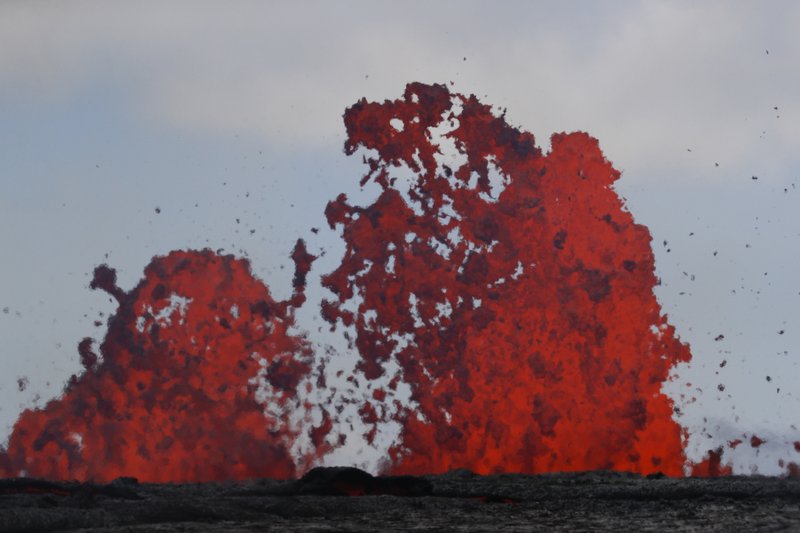PAHOA, Hawaii — Production wells at a geothermal plant under threat by lava flowing from Hawaii's Kilauea volcano have been plugged to prevent toxic gases from seeping out.
Lava from a nearby, new volcanic vent entered, then stalled, on the 815-acre property where the Puna Geothermal Venture wells occupy about 40 acres. Residents have been concerned about hazards if the lava flowed over the plant's facilities, or if heat generated would interact with various chemicals used on-site.
Ten wells were "quenched" by cooling them with enough cold water to counter the pressure of volcanic steam coming from below, said Hawaii Gov. David Ige. The last well was plugged with mud, because it had remained hot despite the infusion of water. Metal plugs in the wells, which run as deep as 8,000 feet underground, are an additional stopgap measure.
"All wells are stable at this point," said Ige. County officials are also monitoring various gases that may leak into the atmosphere.
A spike in gas levels could prompt a mass evacuation, said Hawaii County Civil Defense Administrator Talmadge Magno. Officials, however, have not discussed specific scenarios that would lead to such an emergency.
Puna Geothermal, owned by Nevada's Ormat Technologies, was shut down shortly after Kilauea began spewing lava on May 3. The plant harnesses heat and steam from the earth's core to spin turbines to generate power. A flammable gas called pentane is used as part of the process, though officials earlier this month removed 50,000 gallons of it from the plant to reduce the chance of explosions.
Read Thursday's Arkansas Democrat-Gazette for full details.
